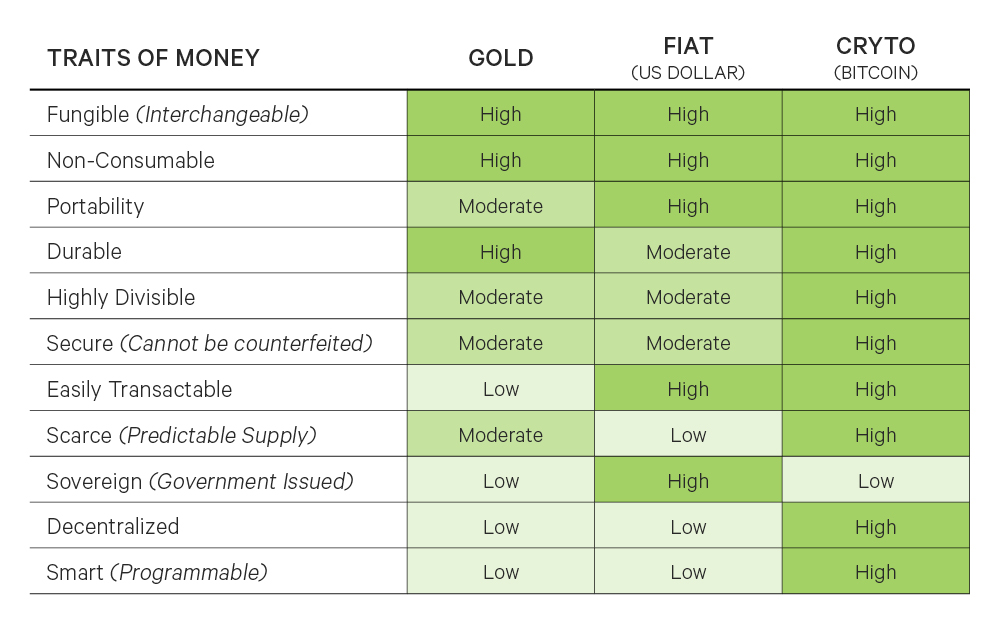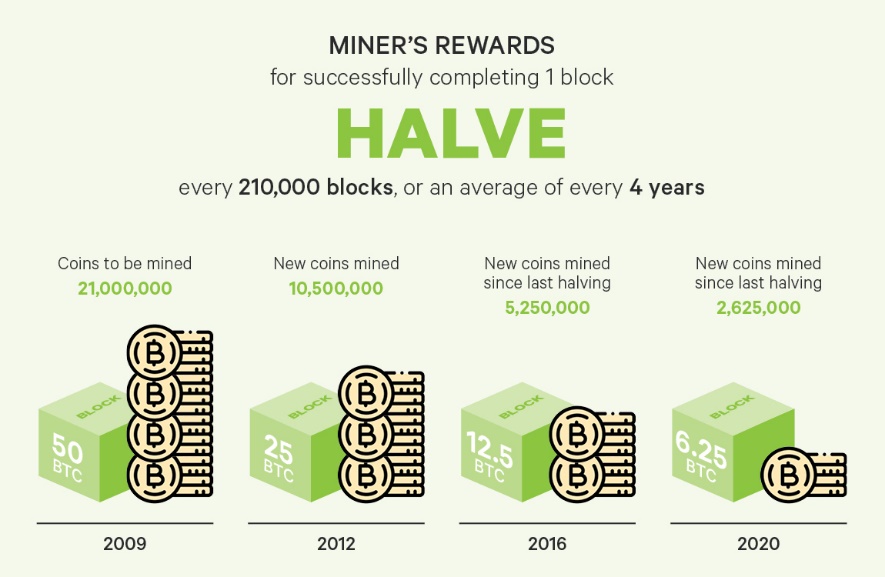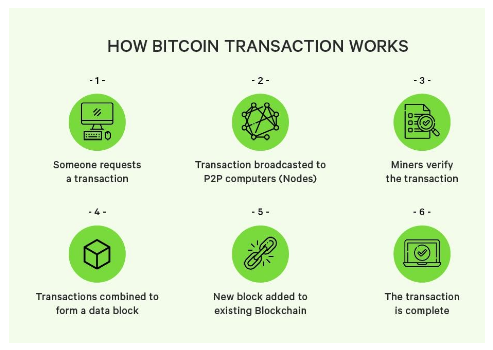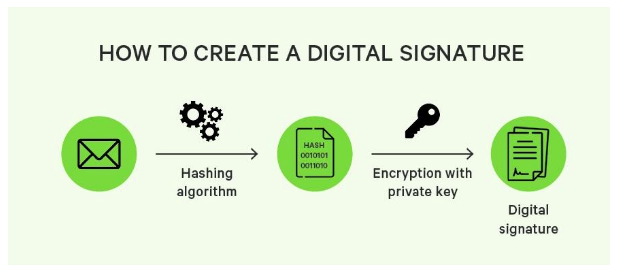Bitcoin
Executive Summary
- Bitcoin (BTC) is a revolutionary concept that is transforming our idea of money. It emerged out of a 2008 whitepaper by Satoshi Nakamato.
- Bitcoins is a store of value and a form of electronic cash that is borderless, secure and decentralized.
- Unlike other fiat currencies, Bitcoin not issued by a sovereign government.
- Every bitcoin is used and recorded on a public digital ledger or public blockchain maintained by a network of computers or nodes. Off-chain use cases of bitcoin arise when it is seen as an investment and is traded on digital exchanges.
- Bitcoins are mined by solving complex cryptographic problems and their absolute “capped” supply of 21 million can be an inflation hedge and this has given it the name ‘digital gold’. Currently, less than 18.8 millions Bitcoins are in supply, leaving approximately 2.2 million left to be mined.
- Bitcoin “halving” is an event that reduces the rewards miners get and this has frequently affected the price of the coin as bitcoins get harder and harder to mine.
- Its proof-of-work system ensures the authenticity of transactions though this results in challenges as the adoption of Bitcoin increases.
- Proof-of-work also calls for a lot of energy consumption and the coin currently faces substantial criticism from the point of view of environmental costs and safety.
- While some countries have adopted it as a legal tender, others have banned crypto mining which bitcoin relies on for future supply. This uncertainty in the global regulatory framework poses a risk to the asset class.
Bitcoin is a cryptocurrency that is used to store value and for making payments. As an electronic cash form, bitcoin was invented in order to offset the centralized power that banks and fiduciary authorities have on transactions. Emerging from a whitepaper written by a pseudonymous author, Satoshi Nakamato, Bitcoin addresses some of the drawbacks of existing financial systems. Since centralized systems are subject to attacks such as theft, a decentralized system was proposed as the more secure way of making financial transactions. In a decentralized system, all the computers on the network hold the records of all transactions and no single entity owns the data. Additionally, the underlying technology of blockchain (see separate article explaining blockchain technology) ensures that each block has the hash of the previous block. A hash is produced when an algorithm identifies a transaction as authentic. Hashing guarantees the authenticity of transactions. A change to a single block will require a change to be made to all the blocks that come after it. Since it is a digital currency, bitcoins are not restricted by geographical or political borders. The transaction fees are also significantly less since there is no third party agent involved.
The total supply of bitcoin is limited to 21 million and this has encouraged the habit of ‘hodling’ or holding on to the coin for extended periods of time running to several years and decades. The limit on the ultimate supply is also seen as a potential inflation hedge especially in the current environment of fiscal easing globally. As a result, like gold which is the traditional inflation hedge, bitcoin is seen as an asset class in its own right for the purpose of investment. As the adoption of bitcoin increases, the restricted supply is seen as a positive feature that can catalyse the demand and price of bitcoin.
These multiple use cases of Bitcoin indicate a nascent sector that is rapidly taking shape due to growing demand, improving regulatory clarity and the ability of the Bitcoin community to address new challenges.
Features of bitcoin
- Bitcoin is a form of digital cash that works on a decentralized network of nodes or computers.
- Its peer-to-peer structure works through a public blockchain or digital ledger on which all transactions are recorded forever.
- Bitcoins can be stored in wallets that are protected by cryptographic keys or on exchanges. Online wallets or hot wallets are different from offline or cold wallets since the former facilitate transactions while the latter are more secure.
- Bitcoin uses the SHA256 hashing protocol so that every input results in an output of 256 bits
A comparison between Bitcoin, the US Dollar and gold shows that
- Bitcoin’s higher security and portability make it superior to gold while its durability, divisibility and decentralization make it better than sovereign, or fiat currencies like the U.S. Dollar.
- Bitcoin’s divisibility makes it unique since it can be divided into .00000001 parts. Each part is called a satoshi, named after the original developer Satoshi Nakamato.
- Its opensource platform extends across geographical and political borders, making transactions faster.
- Its low fees allows users to transact without incurring heavy costs.
- It protects the identity of the sender and the receiver and this improves the security of transactions.
- It can be easily stored in digital wallets and on exchanges.
- It can be exchanged for other assets easily anywhere in the world.
- Since it is a piece of software, huge amounts of bitcoin can be stored in a single wallet.

Ownership
A bitcoin is a piece of software. While it is possible to purchase it on digital exchanges and/or mine it, owning a bitcoin is very different from owning regular assets such as gold or even sovereign currencies. Each bitcoin has an asymmetric encryption involving a public key and a private key. On the blockchain, the hash of the public key is visible and this is called an address. The private key is known only by the owner and is associated with the owner’s identity. This makes any transaction in Bitcoin pseudonymous since only the public key or address is known, never the owner.
Mining
Certain nodes on the network computers on Bitcoin’s blockchain are mining nodes and solve cryptographic puzzles in order to complete a block. Miners get rewarded in bitcoin when they complete a block. Completing a block is equivalent to verifying a transaction on the blockchain. This verification is central to ensure the authenticity of bitcoin transactions since this is the only way the system can safeguard itself against what is called a double spend. In a double spend, a user uses the same bitcoin for two different transactions without the knowledge of the recipients. Since a bitcoin is a piece of software, it is possible to make a copy and so use the same coin twice. The recipients have no way of knowing whether the bitcoin they receive has already been used, and an invalid transaction can be accepted on the blockchain as a valid transaction. This is prevented when miners solve cryptographic puzzles in order to verify a transaction and protect the network from a double spend. The solution involves getting a hash that is closest to the target hash and takes time and energy. A hash is an output with binary numbers (0,1) of a fixed length (measured in bits) irrespective of the length of the input. No two inputs produce the same hash and this ensures overall integrity of systems that use hash functions. Since the input is never revealed, and only the hash is seen, the security of the system is also enhanced.
Mining nodes use a special kind of computer hardware called Application Specific Integrated Circuit (ASIC) to increase their computing power to verify the transaction and add a new block that contains the verified transaction to the blockchain. Since the longest blockchain is the one that all nodes will follow as the authentic one, transactions in bitcoin are secure from fraud since the size of its public blockchain makes it very difficult to have a fraudulent transaction validated on the network. Only when 51% of the total computing power on the network is owned by a single node is it possible to start another chain that is fraudulent. Known as the 51% attack, smaller blockchains have been susceptible to this kind of fraud. But the extensive nodes on the bitcoin network prevent such attacks on the bitcoin blockchain.
Halving
The maximum supply of bitcoin that can be mined is 21 million. By 2032, 99% of bitcoins would have been mined and by 2140 all bitcoins would have been mined. With the exception of the bitcoins that were mined in the genesis block or the first bitcoin block, each bitcoin that is in circulation is a reward that has been mined by solving a cryptographic puzzle. The reward is halved every time 210000 blocks are completed. So the supply of new bitcoins for every completed block is reduced by half after every halving event. This creates a deflationary effect and affects the price of bitcoin. Halving events happen roughly every four years.

Bitcoin Transactions
Bitcoin uses the SHA 256 hash function. Every hash or output will have 256 bits no matter how long or short the input is. Though even a small change in the input results in a completely different hash, the same input will always result in the same hash.

When someone sends a transaction, it is immediately sent to all the nodes on the network. The message has a digital signature that shows that a transaction has happened and that the transaction is valid. The digital signature uses a hashing algorithm that encrypts the private key. Since the encryption is asymmetrical, the public key alone is visible to the sender. To decrypt the message, both the private and public key are needed. So only a person who has both can decrypt a message sent to his or her public key.

Challenges
As Bitcoin witnesses increasing adoption amongst institutional investors, corporations and even governments, certain challenges remain.
- It is not clear how far its adoption will reach the scale needed for bitcoin to replace fiat all around the world.
- Newer cryptocurrency projects like Ethereum may replace Bitcoin due to their versatility and advanced features such as smart contracts.
- Bitcoin mining consumes a lot of computational power and energy, and this is being seen as an environmental hazard. Though an increasing amount of Bitcoin mining is adopting renewable energies, the debate over energy consumption continues to affect the asset. Countries, such as China, have banned mining as a result.
- Since the cryptographic puzzle is a complex mathematical problem, mining is time consuming, and this slows down the speed of transactions.
- The volatility of the price of Bitcoin makes it unattractive for investors and users who have lower risk tolerance.
- Since Bitcoin is not a government sponsored currency, many countries, including the United States and India, consider Bitcoin to be a potential threat to their sovereign currency and are unclear on creating appropriate governing rules for it.
As future money and as an emerging asset class, Bitcoin has several use cases and faces several challenges. While solving several issues in the current monetary system such as centralization, high fees and suboptimal security, bitcoin is still to gain the adoption needed to replace it. Internal hurdles such as transaction speed as well as external ones such as energy consumption and regulatory clarity must be overcome for bitcoin to replace fiat; something which may take a long time. In the meantime, however, as an asset class, it is expected to offer possible investment opportunities to traders and speculators.



